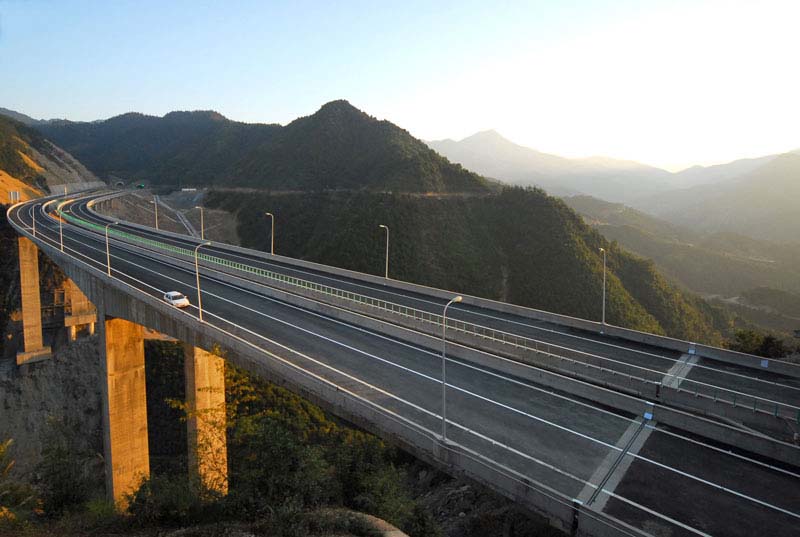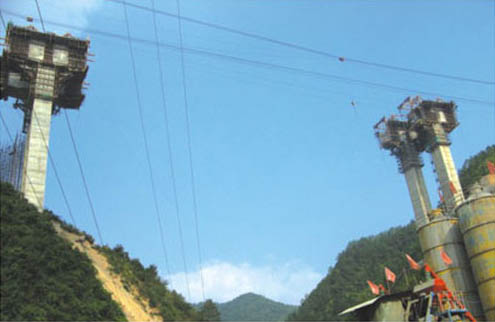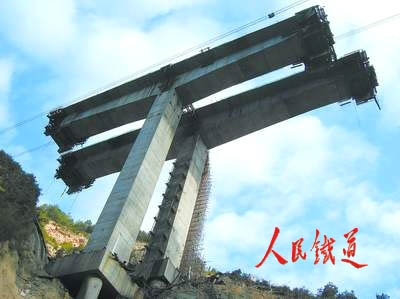Difference between revisions of "Shixinhe Bridge"
(Created page with '<div style="font-size: 25px; text-align: center;"> Shixinhe Bridge<br /> 石心河大桥<br /> Enshi, Hubei, China<br /> (410) feet high / 125 meters high<br /> 486 foot span / 1…') |
|||
| Line 14: | Line 14: | ||
Like so many of China's larger rivers, the Qingjiang has been dammed along its upper course for hydro-electricity and flood control. The reservoir below the Shixinhe Bridge crossing is approximately 40 meters deep making the canyon shallower and less spectacular then in its natural state. | Like so many of China's larger rivers, the Qingjiang has been dammed along its upper course for hydro-electricity and flood control. The reservoir below the Shixinhe Bridge crossing is approximately 40 meters deep making the canyon shallower and less spectacular then in its natural state. | ||
| − | Constructed using the balanced cantilever method, the structure was built outwards from the piers using formwork carriers. The span configuration of 74+148+82 meters is asymmetrical with uneven back spans. | + | Constructed using the balanced cantilever method, the structure was built outwards from the piers using formwork carriers. The span configuration of 74+148+82 meters is asymmetrical with uneven back spans. The tallest pier is 60 meters. |
Revision as of 23:24, 8 April 2014
Shixinhe Bridge
石心河大桥
Enshi, Hubei, China
(410) feet high / 125 meters high
486 foot span / 148 meter span
2015
One of the highest 2-lane road bridges in Hubei Province, the Shixinhe Bridge crosses the famous Qingjiang River several kilometers southeast of Enshi City.
Like so many of China's larger rivers, the Qingjiang has been dammed along its upper course for hydro-electricity and flood control. The reservoir below the Shixinhe Bridge crossing is approximately 40 meters deep making the canyon shallower and less spectacular then in its natural state.
Constructed using the balanced cantilever method, the structure was built outwards from the piers using formwork carriers. The span configuration of 74+148+82 meters is asymmetrical with uneven back spans. The tallest pier is 60 meters.


